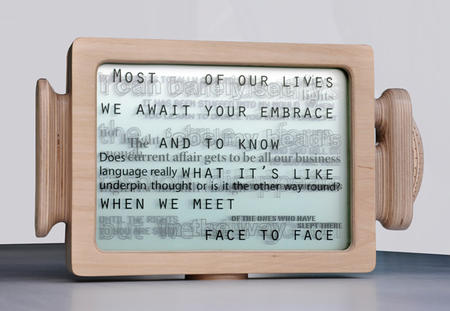If there is one task that has filled many an artist with dread, it is that of writing articulately and clearly about their own work. On one hand, writing about art may seem to be one of the easiest things to do — after all, it’s surely a kind of free-form self-expression, just as art itself.

So, why do so many artists suffer from crippling writer’s block, and how can you conquer yours to produce great writing that doesn’t fall into the familiar traps?
Avoiding ‘artspeak’ is key
There’s a reason why largely indecipherable, overly academic artspeak has become the subject of such widespread parody and ridicule: it’s far too common. So, when you come to write about your own art, first consider what you need your text to actually do and say. Presumably, if it is to be presented to the public — such as in a blog post or on an exhibition label — it needs to advertise your work in a way that is interesting to such parties as gallerists, collectors and other artists.
However, it also needs to feel authentic and faithful to the art that accompanies it, reflecting the interests that led you to create your art in the first place, as well as the process of its creation. Oh, and it’ll also be pretty handy if writing about your art helps to spur on your thinking about your art and inspire new directions for it. Above all else, there’s no excuse for art writing that is completely detached from your art. It needs to accurately represent what you do, how you do it and why you do it.
Authenticity is vital if you are to get your art writing right
It’s easy to forget that contrary to the artspeak stereotype, not all art writing is the same. Some people writing about their art take a diaristic approach, while others are more conversational, and others lean towards almost manifesto-like texts. So, if your mind is a blank, familiarise yourself with the options — as outlined in such great tomes as Kristine Stiles and Peter Selz’s Theories and Documents of Contemporary Art: A Sourcebook of Artists’ Writings — or allow yourself to be inspired by them when devising a unique approach of your own.

However, this is the stage at which I feel the need to mention that word authentic again. So many people who are trying to seriously write about their own art for the first time, particularly when they are targeting heady art-world figures like gallerists and academics, become anxious to come up with something that fits the universally recognised style of art writing. The truth is that such vaunted figures tend to have a well-attuned sense of what is truly pretentious gobbledygook and what isn’t. They may have read literally hundreds of texts like yours before, so it really does pay to be truthful from the outset, to maximise the likelihood that you will write with a voice that is genuinely your own. What is actually driving you to make this artwork, and to continue making it? What is the very core of your artwork? These are the kind of questions that ordinary readers normally want to have answers to, so that they can relate on a human level to what you do – so be sure to ask these questions of yourself when you next write about your own art.
What else to keep in mind
Even authenticity isn’t absolutely everything when it comes to compelling art writing. When the art itself isn’t riveting, for example, even great writing won’t compensate for it. Nor should your writing completely overshadow your art, or consume more of your time than your art — unless, of course, writing itself is central to your practice. When making your finishing touches to that artist’s statement, blog post or other text, don’t put it out into the world until you have received feedback from one or two trustworthy readers. Give your piece a good proofread, and if you aren’t a natural writer, it’s a good idea to ensure that your sentences are short and to the point, so that the reader can better decipher your meaning. Finally, of course, make sure that you enjoy writing about your art! In an ideal world, it should not be a chore done simply for the benefit of other people, but instead an aid to you in your continual thinking about and development of your art practice.
Related reading
An artist’s guide to writing successful applications
How to write an artist statement
How to name and write descriptions about your art
3 questions to ask yourself before you blog about your art
This post was originally published in November 2016. Last updated: October 2021.






